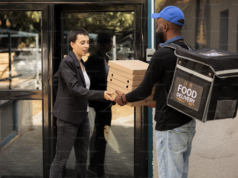Spatial data is the fuel of the information age for multiple reasons. Be it cutting-edge user applications or solving complex problems efficiently, it comes handy. The viability of data, however, rests on its aggregation, collection, processing, and analysis.
Along with the acute mismatch in data collection vs analytics capability, another core issue is lack of a seamless, accessible mechanism to store and share data. Overcoming this barrier is crucial to ensure collaboration. This is where Ellipsis Drive comes into the picture.
Founded in 2018 in the Netherlands, the company has a tool that allows anyone to activate, manage, and share spatial content in less than 10 minutes. It works with Dutch government agencies such as The Netherlands Space Office and the Dutch Water Authorities.
Some of its prominent partners and clients in the private sector are NewSpace satellite operators including Satellogic and Spacety. Ellipsis Drive also works with data resellers, channel partners and solution providers.

“We have hardly seen any innovations in how analysis ready data is stored, shared, and integrated. This is causing a lot of friction in the adoption and consumption of Earth Observation solutions”, says Rosalie Van Der Maas, CEO, Ellipsis Drive, in an interview with Geospatial World.
Ellipsis calls itself ‘world’s first spatial data drive’. Could you elaborate on it?
Ellipsis Drive is the one and only company in the world that has applied the successful formula of drives for office documents (such as Google Drive, OneDrive and SharePoint) to data that goes onto a map (location data of any type).
In doing so we make spatial data as easy to manage, share and collaborate on as any text document or spreadsheet in a regular drive. We do this by converting uploaded spatial data files into beautiful live maps and web services that are made accessible via your endpoints and tools of choice. Interoperability at its finest!
Tell us more about your recent partnership with Arlula?
Arlula and Ellipsis Drive see eye to eye when it comes to two things:
1. To harness the projected potential of the NewSpace industry we need to see a huge shift in the process of storage, delivery, and integration of analytics ready spatial data.
2. Innovative players, focused on solving niche challenges, need to collaborate and band together wherever possible. This is how we can ensure great end-to-end services and make big changes to help the industry grow.
This is the reason we have entered into a partnership. Our technology supports the same mission while being complementary in doing so. Alula is not the first and not the last. We hope many more companies join our ecosystem of change makers this year.
What is the Ellipsis Drive vision for a post-pandemic world, and what do you think are the key technology trends that will impact the space sector in the coming years?
I believe the post-pandemic world will lead to a revolution in Earth Observation data management and distribution. We have seen enormous capital investment in getting the right hardware up to space, to send relevant data down, but the industry has been overlooking ‘the last mile’ to the end user. Gaps of various shapes and sizes still exist between spatial data products and their audience.
We have hardly seen any innovations in how analysis ready data is stored, shared, and integrated. This is causing a lot of friction in the adoption and consumption of Earth Observation solutions.
Technology advancements that make spatial data more consumable will assume center stage as a key enabling technology for the space industry.
How do you think the potential of New Space for innovation can be best leveraged across sectors, and what would be some of the defining business models in this segment?
Honestly, I believe the business models as applied by the NewSpace industry need to be derived from the industries our sector is – and will be – supporting. And that includes a very diverse set of industries.
Adapting to standard business practice is the best way to work toward fast adoption in any new market. EO businesses need to be enabled to apply business models as flexibly as the situation requires.
We shouldn’t ask our target markets to change for us. We need to change for them. This is only doable when our data products are inherently interoperable (easy to consume for anyone) and our licensing lenient.




